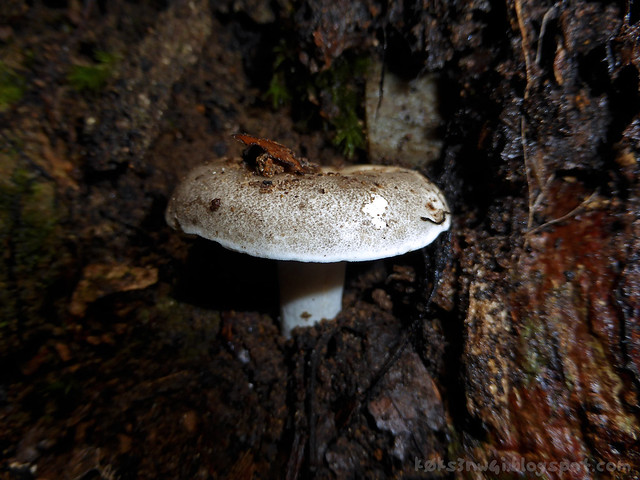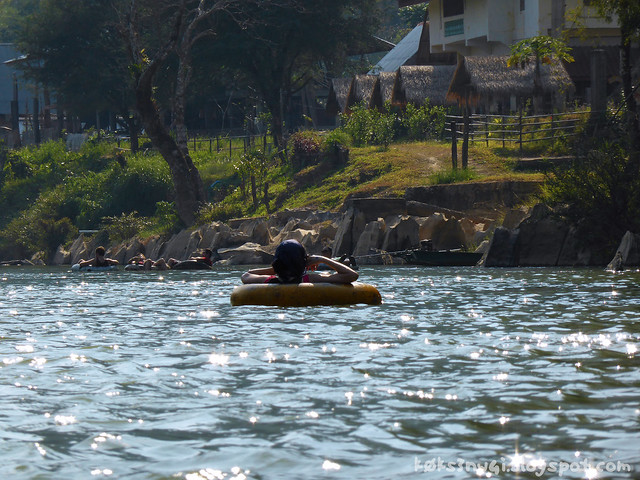"They are not all saints who use holy water."
English Proverb
To begin my story again, on the 5th of April, a Saturday of no great distinction, I decided to hike up to the summit of Mount Singai which is historically the ancestral grounds of the BiSingai Bidayuh people. I arrived early and parked my car right at the feet of a tall, stainless steel, art deco Jesus. Then, carrying my backpack and camera tripod with me, I accidentally started my trek in the wrong direction.
 |
| A Jesus sculpture made out of pipes and metal sheets. |
That had me walking past a random shophouse in the local village and the Bidayuh shopkeeper minding the establishment gave me a once-over before asking in Malay,
"Climbing Singai?"
It sounded nothing like a question, of course. In fact, I had the distinct impression that he was pronouncing some judgement upon my person. Regardless, I smiled at him and answered in the affirmative.
Glancing at my oblong bag containing my tripod, he asked another severe non-question,
"Going to take a lot of pictures?"
He was nodding sarcastically with wide mocking eyes as he was saying this, so my hackles began rising in response. I know hostility when I see it and having just exited my car not one minute ago, I was sure I could not have given him cause for it yet. So, I responded with silence.
"Why don't you go climb a mountain with a Tua Pek Kong on it instead?" he remarked sarcastically. No smile. No laughter. There was naked hatred in his voice.
I just walked away at this point. Tua Pek Kong literally means "Grand Uncle" in the Hokkien dialect and is one of the local deities worshipped by the Malaysian Chinese community. That racist nut-bag had assumed that I worship Tua Pek Kong just because I happened to be ethnically Chinese and apparently, he also thought that Tua Pek Kong worshippers should not climb a mountain that has a Catholic church on it. Doesn't he know that Chinese people can be Catholics too instead of assuming that I wasn't? Did it somehow escape his notice that the Bishop of the Kuching Archdiocese who officially blessed the place when it was completed in 1995 was a Chinese guy called Peter Chung? And that his local mitre-wearing head honcho, the Kuching Archbishop, is yet another Chinaman named John Ha?
For a minute, I considered returning back to Kuching or go visit another local attraction since my morning had been soured by that odious pot-bellied man, but that would mean letting racism win the day - and I would never let prejudice and bigotry win my day. So, I parked my car at a different location (in case that prejudiced prick thought to do something nasty to it) and continued with my plan of climbing the mountain.
Now, the road to the peak of Singai is divvied into two unequal portions: the easy 30-minute ascent to the Catholic Memorial Pilgrimage Centre (CMPC) using the wooden boardwalks and stairs, and the 2-hour climb on the jungle trail from CMPC to the top. At the very beginning of the jungle trek, a large yellow sign had been erected there bearing this message:
 | |
| Look, they even had it translated to Chinese. |
IMPORTANT NOTICE
It is our desire to allow all to enjoy the beauty of God's creation so that, despite numerous complaints of visitors removing fruits and plants, we have not stopped you from climbing this mountain.
But some visitors have recently gone so far to abuse our generosity by erecting 'Tua Pekong' on the summit, thereby showing grave disrespect to the Singai Bidayuh for whom Mount Singai is not only their ancestral home but a place where local Catholics trace their Christian root.
Mount Singai must be maintained as a sacred and holy mountain.
All attempts to introduce idols and deities are strictly prohibited.
TAKE NOTICE that passage to the summit will be closed upon any further abuse.
Vincent Eddy ak Sireng
Chairman
CMPC Mt Singai, Bau.
21st August 2004
Oh ho ho, now that racist shopkeeper's rude remarks made sense to me (racism doesn't really make sense to me, but you know what I'm getting at). How dare these Tua Pek Kong worshipping chinks bring their blasphemous idols to the summit of Singai! The Catholics abhor idolatry! I mean, just look at Exodus 20:4-5 of the Catholic Edition of the New Revised Standard Bible! It is part of commandment number one!
"You shall not make for yourself an idol, whether in the form of anything that is in heaven above, or that is on the earth beneath, or that is in the water under the earth. You shall not bow down to them or worship them."
And Catholics would never ever make themselves idols...
 |
| Jesus on a stick in the Christ the King Church at CMPC. |
... in the form of anything that is in heaven above...
 |
| The allegedly virginal Mary at the Grotto of Our Lady of Lourdes at CMPC. |
... or that is on the earth beneath or in the water under the earth.
 |
| A roomful of merchandised porcelain Jesuses, Marys, and various saints at CMPC which they sell to devotees. |
And good Catholics will absolutely never bow down or worship these graven idols, no sirree!
 |
| Catholics in the act of not bowing down and worshipping Mary's statue at the CMPC's Our Lady of Lourdes Grotto. |
And remember folks, "all attempts to introduce idols and deities are strictly prohibited". Unless your deity or idol is Catholic - in which case, introduce away!
Historically, the Bidayuh of Singai practiced a form of ancestral worship called Adat Gawai and in 1885, a young Dutch Roman Catholic priest called Father Felix Westerwoudt came to Sarawak and settled amongst the local tribespeople. For 13 years, he lived with the BiSingai, learned their language and culture and even travelled from village to village to persuade the Bidayuh people to convert to Christianity - but he was largely unsuccessful as they held on to their pagan religion. At the time of Westerwoudt's death at the age of 37 after taking ill, only seven Singai families have embraced Jesus.
Of course, with further persistent attempts at supplanting the local beliefs, Westerwoudt's successors eventually realised their missionary efforts. Now that Christianity have put out roots in the local community, the mountain that previously held pagan significance to the forefathers of the BiSingai were converted into a Catholic pilgrimage site - which brings to my mind a rather interesting question.
Would the long-dead original settlers of Mount Singai who practiced animism be offended by the idols and deities introduced by the Catholics here?
RELATED POST: An Atheist on a Christian Mountain
Actually keeps the "no idols" commandment,
k0k s3n w4i












































